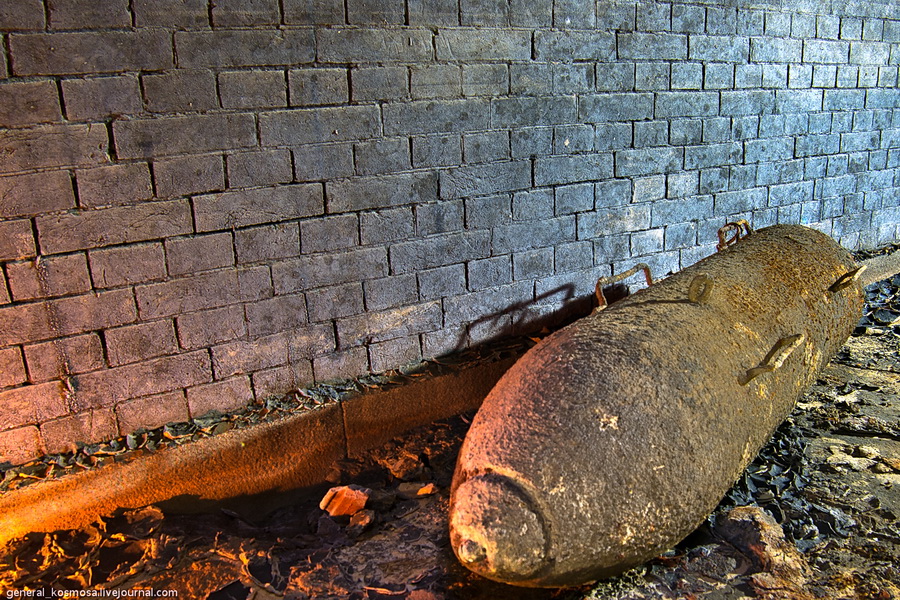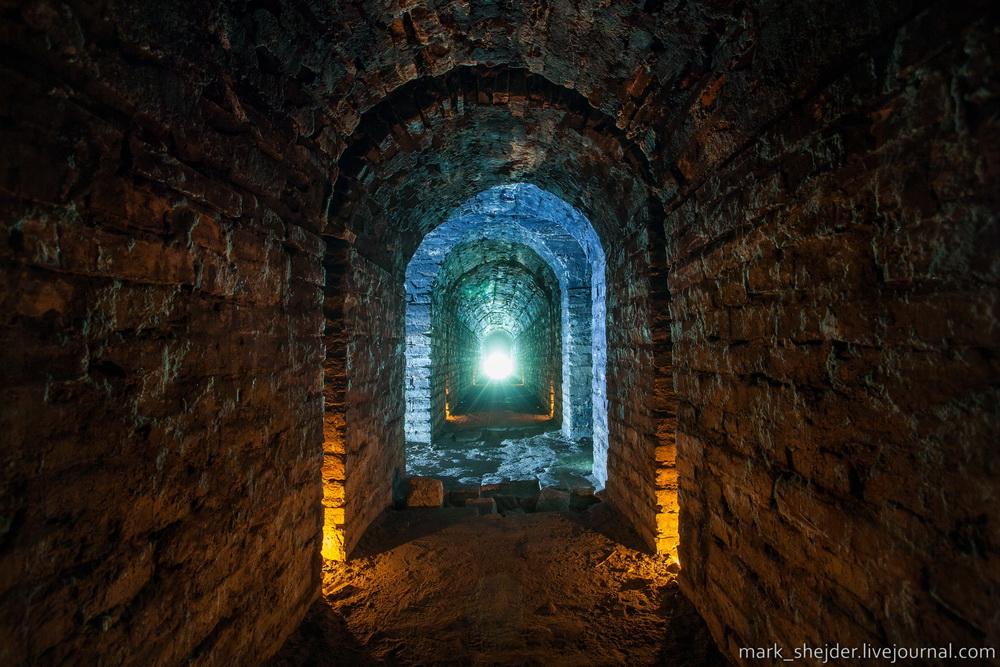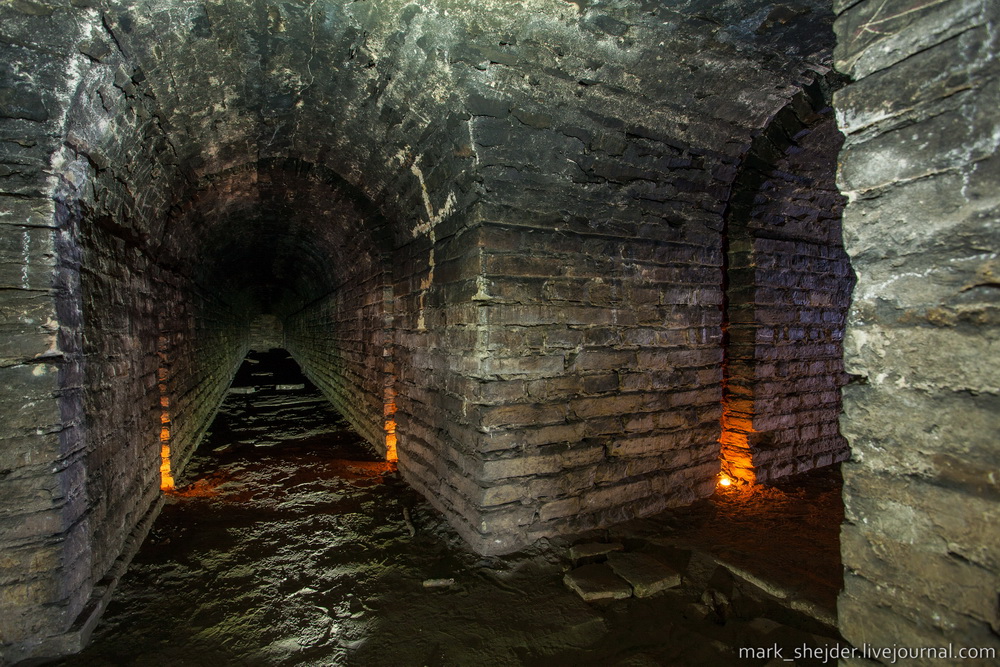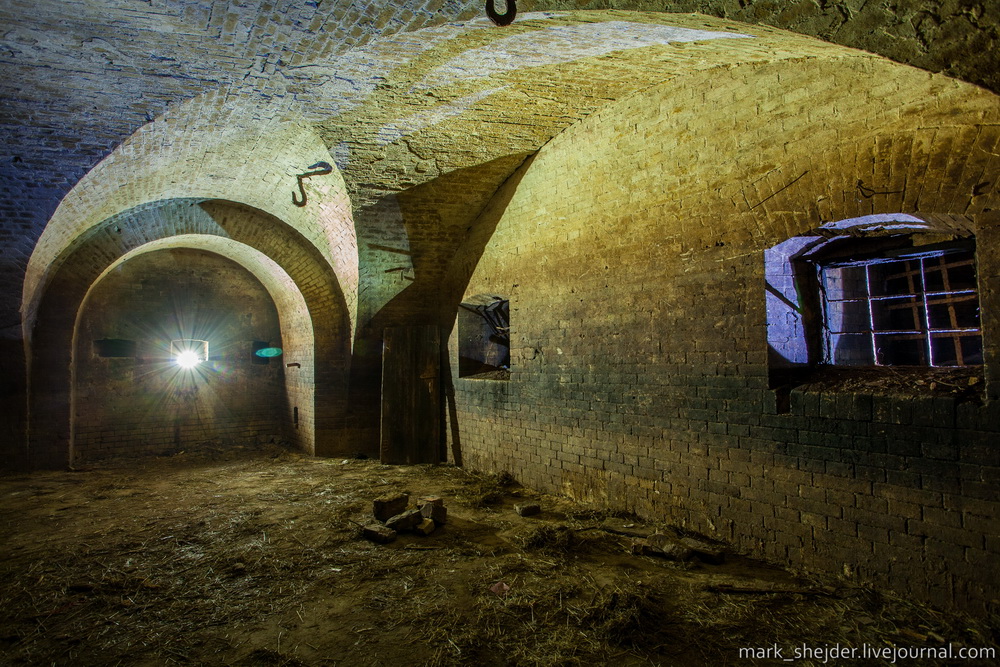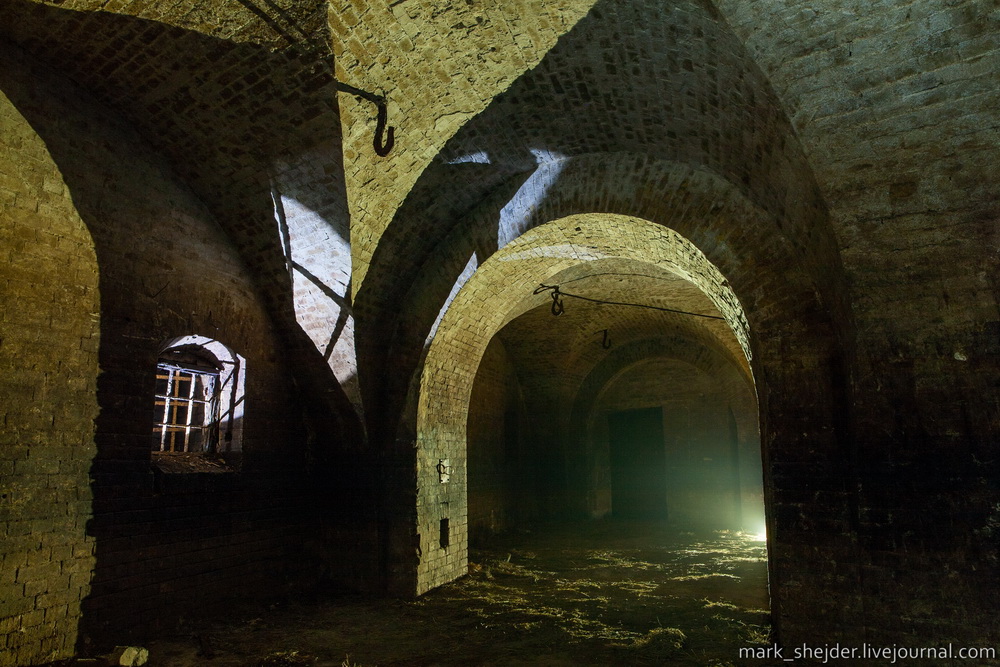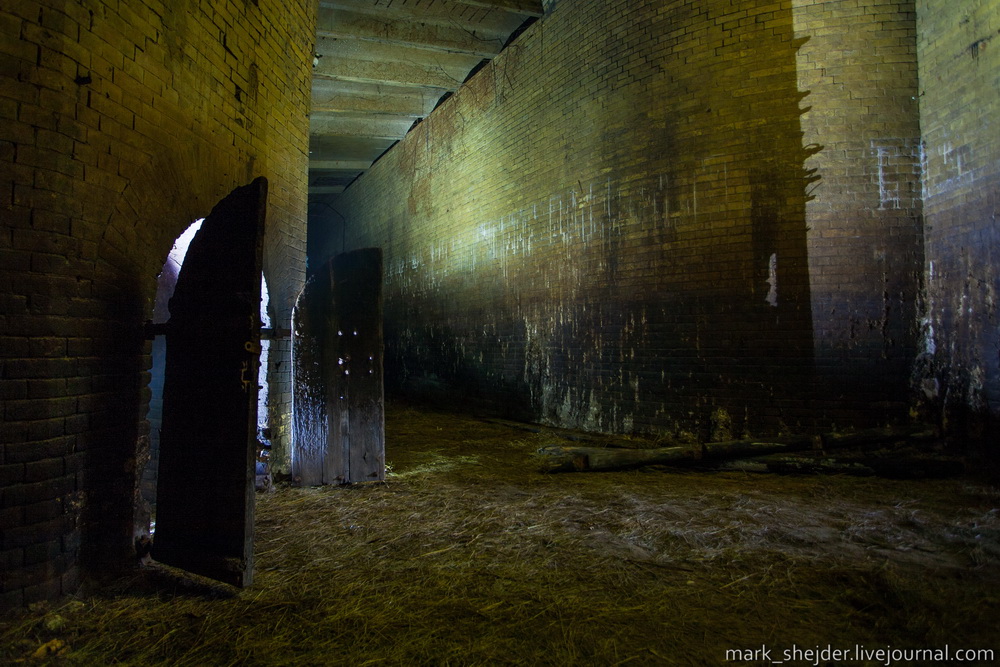In 2007, during the initial stage of construction of a multi-storey residential building in the area of Lesi Ukrainka Boulevard near the Pecherskaya metro station, the entrance to the casemates of the Vasilkovsky fortification, which is part of the Kiev fortress, was excavated (this place is mistakenly called the NKVD underground prison). As expected in such cases, an archaeologist was called to the place – at that time the director of the Museum “Kiev Fortress” Vyacheslav Kulinich arrived at the site , to assess the historical value of the find.
According to Kulinich (he initially, for some reason, called this facility an underground prison of the NKVD), under the USSR access here was prohibited, and after the construction of the Pecherskaya metro station (December 1997), these dungeons were flooded with groundwater. In normal condition, before the flooding, they were seen by a very limited number of people. Like many fortification systems, the Kiev fortress has an extensive system of not only underground passages for moving people, but also large-diameter brick tunnels designed to move a large number of people and vehicles.
When he got into the dungeons of the Kyiv fortress, he first found himself in a vaulted vestibule, and then his path was blocked by a wall made of modern new masonry. Most likely, it was built during the USSR so that no one could get in there, but apparently construction workers, while pumping out water, made a small passage. The underground room into which the archaeologist found himself consists of 2 corridors 25 meters long, connected at right angles. Wide, 7 meters high, these corridors are in no way reminiscent of the narrow passages in Lavra caves. On one side there is a blank wall, on the other there are entrances to some rooms. In this wall you can see loopholes converted into small windows with rusted bars. The first room, with a low entrance and double doors of blackened wood, had a thick layer of clay on the floor. The ceiling here is lower – 3 meters, the brick floor is strewn with splinters, and in the next room there are wooden objects, darkened by time, that look like cabinets and shelves.
On the wall you can see powerful rusty hooks coming from the ceiling – in those days when the fortress was active, soldiers threw a rope and tied the other end to a cannon so that after firing it would not roll back to the wall. The next room is unremarkable – it contains a dump of old rotten wood, but the next one is more interesting – in the middle there are two huge rusty tanks. It turned out to be impossible to further explore the dungeon – both corridors end with partitions of modern masonry. It’s a pity, because these passages under the fortress probably conceal many mysteries…

